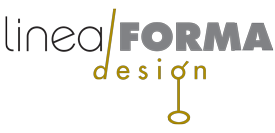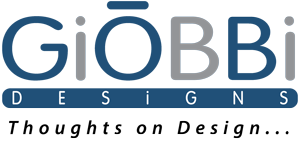Since I was a boy, making models always appealed to me. I guess it goes to back to my year in Cub Scouts and the Pinewood Derby. I built my car without help, and I loved it. From there, it was many plastic car kits, until I got bored by the kits’ pre-determined results, started making my own designs out of balsa wood and body putty, using spare parts from old plastic kits for my wheels. And, of course I loved drawing cars too, and later went to Art Center College of Design in LA, studying transportation design. There I learned the fine art of clay modeling, right down to the “old school” techniques of building my own clay modeling tools, and set of ship curves for creating 2-3 foot long arcs along body surfaces.
 After school, I worked a year learning centrifugal casting for Scale Structures Ltd., a company that made limited edition HO scale building kits for model railroaders. The kits were made of cardboard, balsa wood and metal parts. I cast the parts from hot metal poured into spinning rubber molds. These collector kits could have several hundred parts each, and part of my job was painting and building the first prototype kit of each new model product for photographing, like this little one called the Tool Shed. It’s a little over 4″ long. I also learned the art of making dioramas, building whole scenarios with the models and surrounding scenery.
After school, I worked a year learning centrifugal casting for Scale Structures Ltd., a company that made limited edition HO scale building kits for model railroaders. The kits were made of cardboard, balsa wood and metal parts. I cast the parts from hot metal poured into spinning rubber molds. These collector kits could have several hundred parts each, and part of my job was painting and building the first prototype kit of each new model product for photographing, like this little one called the Tool Shed. It’s a little over 4″ long. I also learned the art of making dioramas, building whole scenarios with the models and surrounding scenery.
After working with miniatures, I then worked a year for a point-of-purchase display company in San Francisco, building prototypes and managing their workshop, before going to work for Modern Mode Inc. (MMI), in Oakland, CA in 1976. MMI made wooden desks, casegoods and seating, and over time, I became their head of design/engineering and custom products as well as senior sales engineer. I spent half my time working with architects and interior designers developing the non-standard products for their orders, and the other half of my time creating drawings and work orders, and then following the custom products through the factory to make sure they were built to spec. I learned so much at the factory, I bought all my own power tools and built a shop in my garage for after hours design work. I would haul wood scraps from the factory dumpster on Friday nights in my 1952 Chevy pickup, and soon my house was full of my original furniture designs. One of my chair designs, a modular multiple chair system for airports and lobby areas named Travis, was developed by MMI. These are a few of the models I built at the time.
During my last year at MMI, in 1979, my chief responsibility was to design and develop an open office wall panel/desk system. I used the outside services of a industrial engineer named Ron Skaff to help me with the electrical system components and some mechanical connector issues, and in the process, made a lifelong friend. After successful completion of the office system design, I left MMI and started Linea Forma with Ron in 1980.
 Linea Forma’s first big project was to design a composite plastic body to replace the riveted steel body that was being used on yard tractors in Southern Pacific Railroad freightyards and port facilities in California. In the front entry area of our office, Ron and I built a quarter-scale clay model of the truck body, and a full scale model of the interior, complete with dashboard, console and seat. My handmade tools and art school training had paid off. Our models and drawings were used to direct the building of the first prototypes which were shown at the San Francisco International Truck Show in 1983. The design was unique and progressive looking, and by switching from steel riveted construction to a fiberglass composite, costs were dramatically cut, enough to give the drivers air conditioning, a radio, swivel seat, and back door, making their main job easier. The drivers loved us. By the way, that picture at the top of this post is the original green prototype shot at the Port of Oakland in 1983, and a red 3D model I built and added into the scene in 2013 to commemorate the 30th anniversary of the “Rhino”.
Linea Forma’s first big project was to design a composite plastic body to replace the riveted steel body that was being used on yard tractors in Southern Pacific Railroad freightyards and port facilities in California. In the front entry area of our office, Ron and I built a quarter-scale clay model of the truck body, and a full scale model of the interior, complete with dashboard, console and seat. My handmade tools and art school training had paid off. Our models and drawings were used to direct the building of the first prototypes which were shown at the San Francisco International Truck Show in 1983. The design was unique and progressive looking, and by switching from steel riveted construction to a fiberglass composite, costs were dramatically cut, enough to give the drivers air conditioning, a radio, swivel seat, and back door, making their main job easier. The drivers loved us. By the way, that picture at the top of this post is the original green prototype shot at the Port of Oakland in 1983, and a red 3D model I built and added into the scene in 2013 to commemorate the 30th anniversary of the “Rhino”.
Although the Rhino yard tractor was my only opportunity to design an actual vehicle, the experience was unforgettable. I still enjoy the art of car design. Cars are the embodiment of line and form that we encounter everywhere. It is part of our internal perception of what is good and bad design. Today, I build cars in my main 3D program, Autodesk Maya, for my own entertainment. In some ways, it takes me back to my childhood model making nights on the pingpong table in my family basement, putting all the pieces together and being creative. Only now, it’s on my computer screen. And even more fun. Designing, making things and figuring out how they go together remains my greatest passion.
Share this:


5 Responses
Elisa Giobbi Mills
I second Joel’s comment. Nice website, dude. Very cool. You’ve sure been busy all these years, making the world a more aesthetically pleasing and functional place. The broadness and extent of your talents have always amazed me.
I’ll be sure to read on…
Cheers!
Karl vinsek
You didn’t say anything about Illini towers? bar tending at the Tivoli or painting shop at the dealership over by US 30 and western ave!
I heard they were sad to see you go from all three.
bgob1
Thanks Karl! One story at a time. Keep reading!
Joel Summer
Nice website, dude.
bgob1
Thanks Joel. Come visit soon!